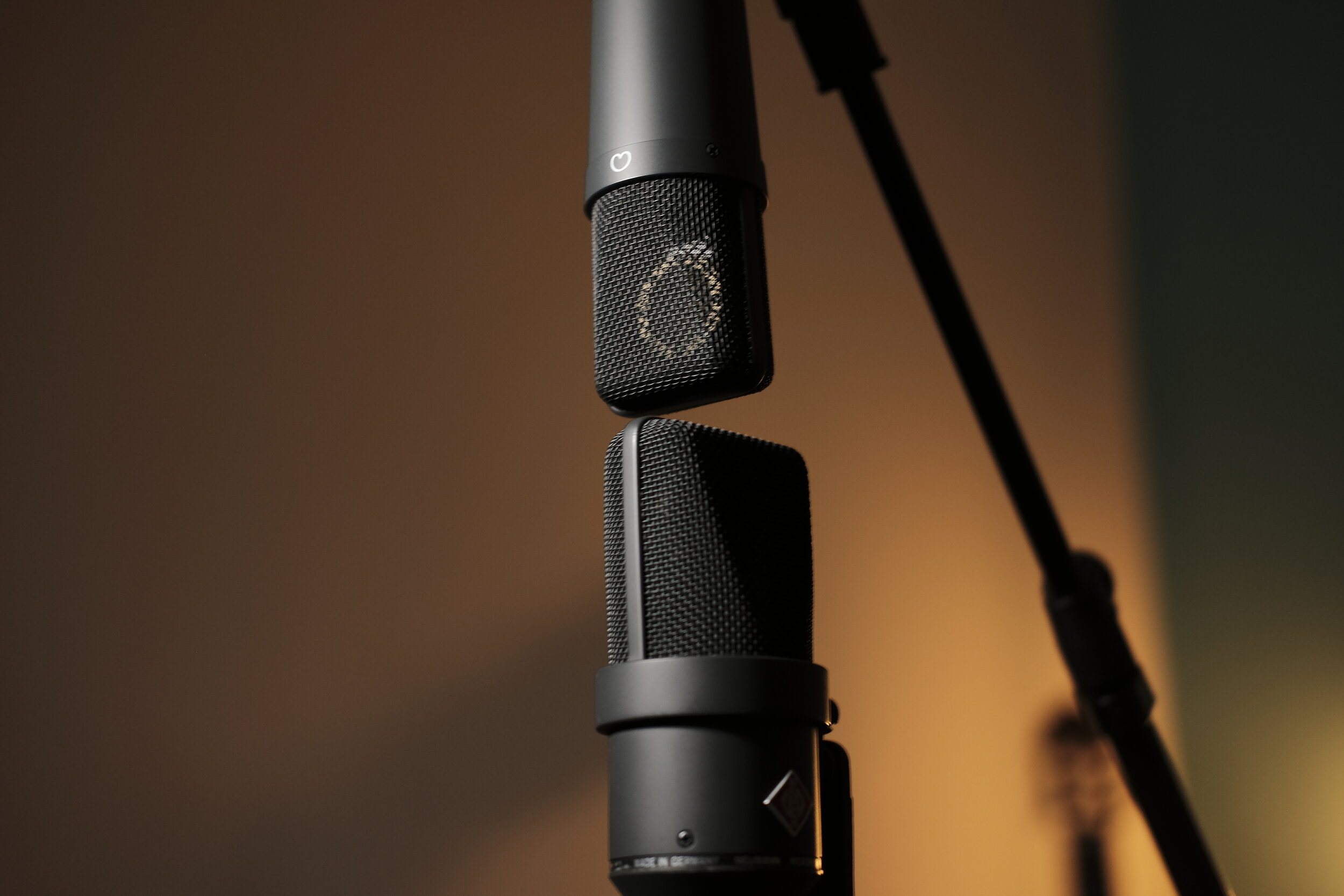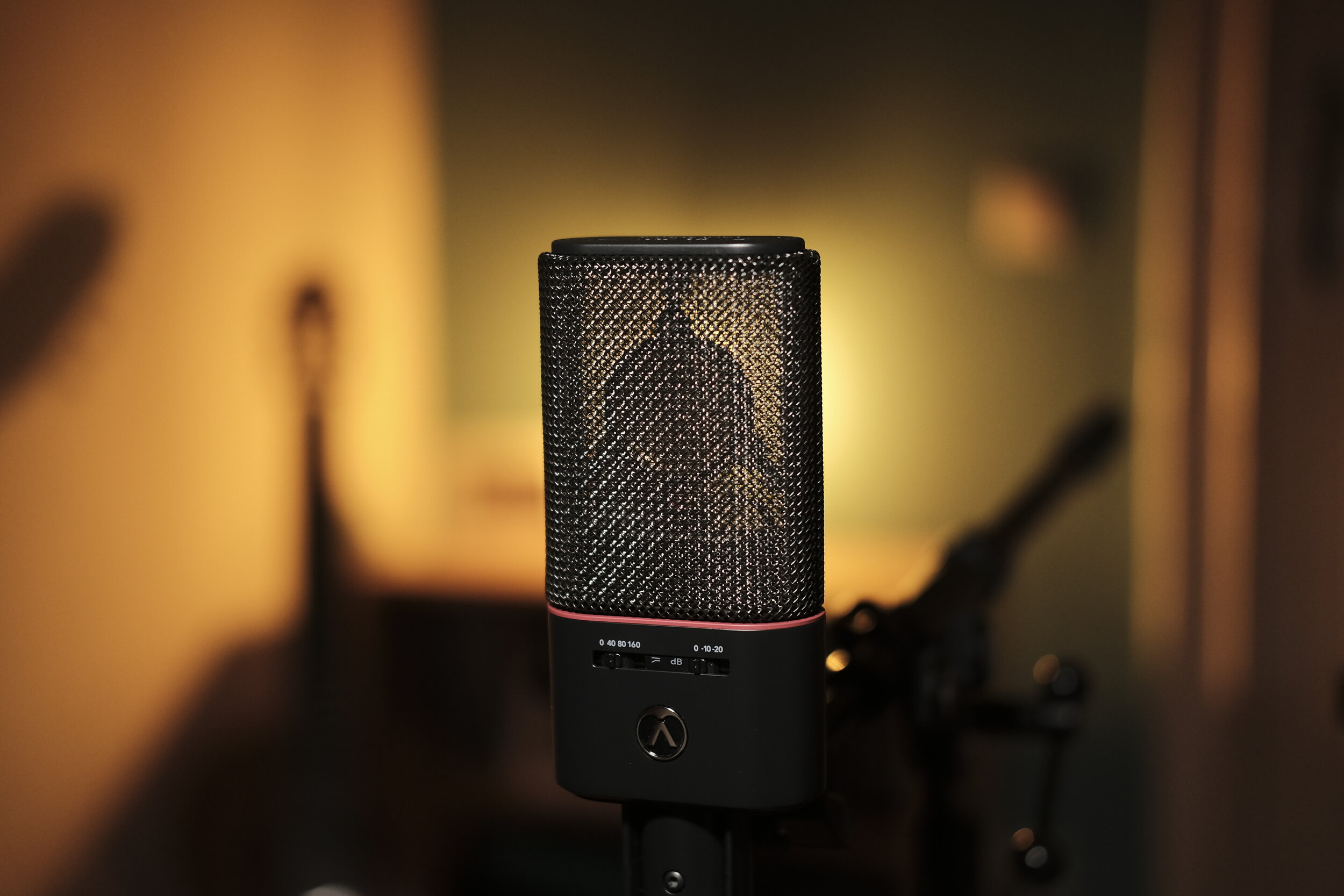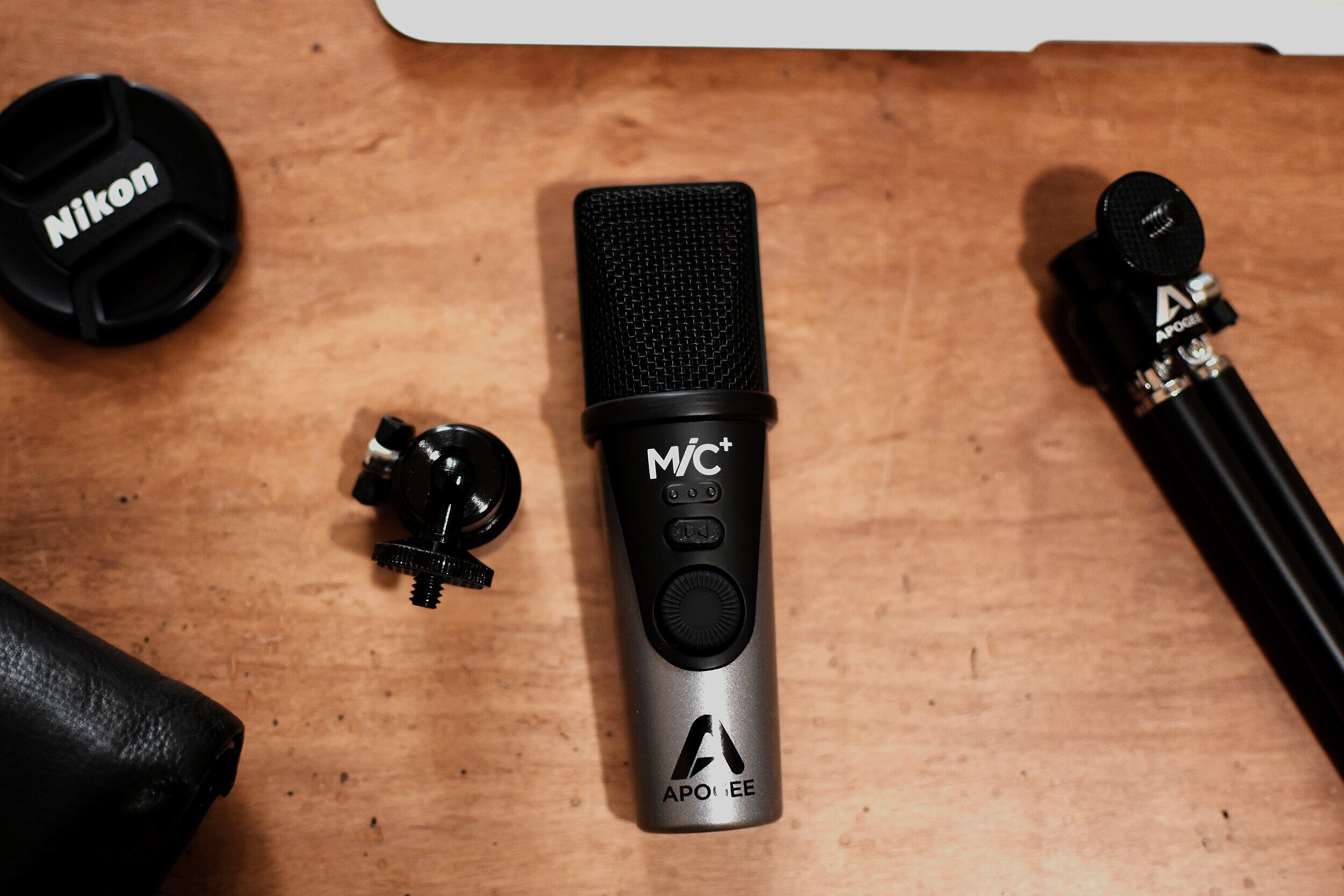A Three-Microphone Setup for Recording Classical Guitar
An M/S Stereo alternative.
Classical Guitar is a complex and rich sounding instrument; as such, it sounds better when is recorded with at least two microphones. A statement that you must have read several times already if you hang out at this site. Some engineers argue though that guitar is a relatively small instrument which tends to sound too "wide" when recorded with the most conventional stereo techniques; thus sounding unrealistic in playback.
Neumann TLM 193 and TLM 170 in M/S Stereo Configuration
Mid/Side stereo, which I discuss in my Three M/S Stereo Setups for the Classical Guitar article, is usually praised for its truthful representation of the classical guitar. The elimination of phasing problems and the flexibility it offers during mixing are additional important advantages, however, it is not immune to potential issues. Namely, the collapse of the room information in mono reproduction, and the inability to hear the resulted-combined sound without some processing to the channels (or the use of an M/S matrix). Lastly, symmetrical Figure-8 microphones, required for the "Side" channels, with a balanced response are generally expensive.
Alternatively, the combination of a "Mono" microphone placed at close-proximity and a "Stereo Pair" at some distance, shares some similar advantages without the drawbacks of M/S Stereo. Hence the Three-Microphone Setup is an appropriate option for capturing the subtleties of the classical guitar.
Purpose in position
Austrian Audio OC18 - A Large Diaphragm Cardioid Condenser
The "Mono" microphone is positioned close to the instrument (at about 50cm, although some could go as close as 30cm) to capture a full-bodied sound. I recommend a large-diaphragm condenser with a smooth treble response for this position; as not only it will capture the fullest sound, but the slower transient response of the large capsule will also give a less analytic, more relaxed response.
The "Stereo Pair" is placed a little further away to capture the sound of the room. A pair of small-diaphragm condensers is ideal here due to the better off-axis response and can be either Omni or Cardioid patterns depending on the acoustics. The actual distance depends mainly on the room; accordingly, as the distance increases, the height of the microphones should be increased as well. The distant pair brings to the mix crucial depth, space and some high-end articulation.
Decisions; Player vs Audience
Another way to see the three-microphone setup is as a fine compromise between the intimacy of what the player hears and the somewhat distant experience of an audience member.
During mixing, the three channels can be balanced to the desired sound; from close to distant and everything in between. Either the "mono" or the "stereo pair" can be used as the base sound. Think about a mono capture with some extra space or a distant pair with added fulness.
Examples
For the first recording, I used a Neumann TLM 193 relatively close to the guitar, and a wide pair of DPA 4011As as room microphones.
In isolation, neither the Mono signal nor the AB pair sounds particularly great. The first is somewhat plain and too direct, while body and weight are missing from the AB pair. When mixing all three microphones, the combined sound gets defined and three-dimensional; thus more real.
I made another example of the same setup and the exact same distances, this time with an Austrian Audio OC818 in Cardioid for the Mono duties. The AB pair is still the DPA 4011A. If you have read my Austrian Audio OC818 review, you already know that I love their sound, and I wanted to hear how well they can mix with the DPA microphones.
Combining M/S and Room Microphones
A few months ago, I also experimented with combining an M/S pair of Neumann TLM 193 and AEA N8 up close and a stereo pair of Austrian Audio OC818s at some distance, you can hear the result in this recording of Bach's Cello Prelude no.2.
Some things to take care of
If you want to try the Three-microphone setup, it is important to listen to the recording as a whole before committing to any microphone position. The Mono microphone may be judged alone if you plan to use for the main sound, but don't make bold decisions without listening to the combined audio.
Potential phasing nightmares is one of the biggest drawbacks of this setup, so take extra care to eliminate any issue and check with a proper phase meter plugin regularly (read my article on the Three Most Essential Plugins for Classical Guitar).
Lastly, although the recording should be evaluated as a whole, the close and distant setups might need to be EQed separately. Nevertheless, you may apply a catholic EQ with basic filters and sculpturing.
Cheaper Alternatives
Line Audio CM3 - A budget SDC with an surprisingly good sound
Apart from the aforementioned combinations, any microphone could do a decent job. If you just starting and your budget is limited, buy the best large-diaphragm condenser you can afford and a pair of cheaper small-diaphragm condensers, like the Line Audio CM3/CM4 (read my comparison of the Line Audio CM3 and DPA 4011A).
Final thoughts
I've seen mostly AB, XY, ORTF and sometimes M/S setups explored by engineers and home recordists for the classical guitar. All of which can produce excellent recordings given the right circumstances. Yet, I find that with more elaborate techniques I can capture the instrument, at home or on location, with exceptional precision, without any disadvantages. Except maybe for needing more input channels, cables, stands, and more time for the setup.
A Three-Microphone setup can shine in a very wet hall, as it allows us to capture the body and definition of the instrument while including as much ambience as desired. In a home recording of the classical guitar, it offers great flexibility, if not to provide ambience, it combines the intimacy and fullness of a close pick-up with some extra depth provided by the spaced pair.
So, what do you think? Have you tried a three-microphone setup? Which microphones have you used?
Apogee MiC+ on a Classical Guitar
Apogee´s new USB microphone promises improved sound quality and lower noise floor from its predecessors.
Apogee MiC+ on it’s Tripod
I wanted to buy a USB microphone for some time now but the ones that I have tried in the past didn't convince me. USB microphones are usually guilty of high self-noise that can be quite problematic when recording such a subtle instrument as the classical guitar. Additionally, since they are mainly aiming for voice-overs, vocal recordings, podcast and such activities, they are usually quite bright for my tastes.
The new MiC+ is definitely an improvement over the older versions. The self-noise is audible in comparison to my normal setup but I don't find it to be a problem for non-commercial uses. It is also a little bit on the bright side, but natural enough for use with a classical guitar and other acoustic instruments.
Apogee MiC+ Connections
It seems very well made and I believe it can take some beating, but don't forget it is a sensitive condenser capsule in there, so don’t drop it.
Apogee includes in the package everything you need to start recording right away; desktop tripod, microphone stand adaptor and USB Type A, USB Type C and Lightning cable. My only gripe is that the supplied cables are rather short, connecting the MiC to a Desktop or Laptop computer will be proven a challenge.
Comparisons
A few diffefent recording options.
My next task was to see how the MiC+ compares with several different options; alternatives that have clear-cut strengths and definite uses, but I consider them to fall into a similar budget. From a tiny portable recorder (Olympus LS-P2), to a budget SDC (Line Audio CM3), to a higher priced LDC (Neumann TLM102).
Olympus LS-P2
+ the cheapest, the smallest, doesn't require any additional gear, it is stereo
- most self noise, although its mids are sweet-sounding, the sound is somewhat narrow and small
Apogee MiC+
+ affordable, comes with everything you need and it only requires a phone/tablet or computer to work, a decent headphone output
- noisier that the CM3 or TLM102, much brighter, feels cheaper
Line Audio CM3 (read my review)
+ smooth and natural sound, no colour, small, cheap, comes with plastic case
- needs decent preamps to avoid added noise, not very detailed, needs an audio interface/cable/stand (additional cost)
Neumann TLM102 (read my review)
+ clear and defined sound, nice articulation, a little bit of colour but never harsh, practically noiseless
- needs an audio interface/cable/stand (additional cost), big (actually it is very-very small for a LDC, but for the sake of this comparison), expensive
Conclusions
All in all, it is a great mini microphone and although it is not meant to replace a discrete signal chain with high end microphones, preamps and converters, having access to such equipment when I'm on the road is not usually an option and the MiC+ comes to fill the gap as it sounds better than most portable recorders and it fits in the pocket of my jacket.







